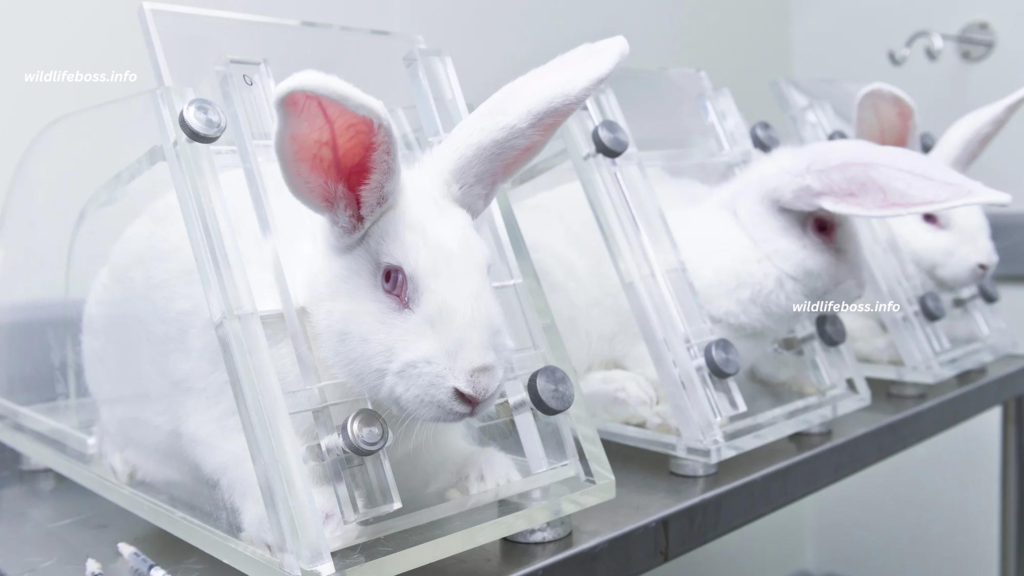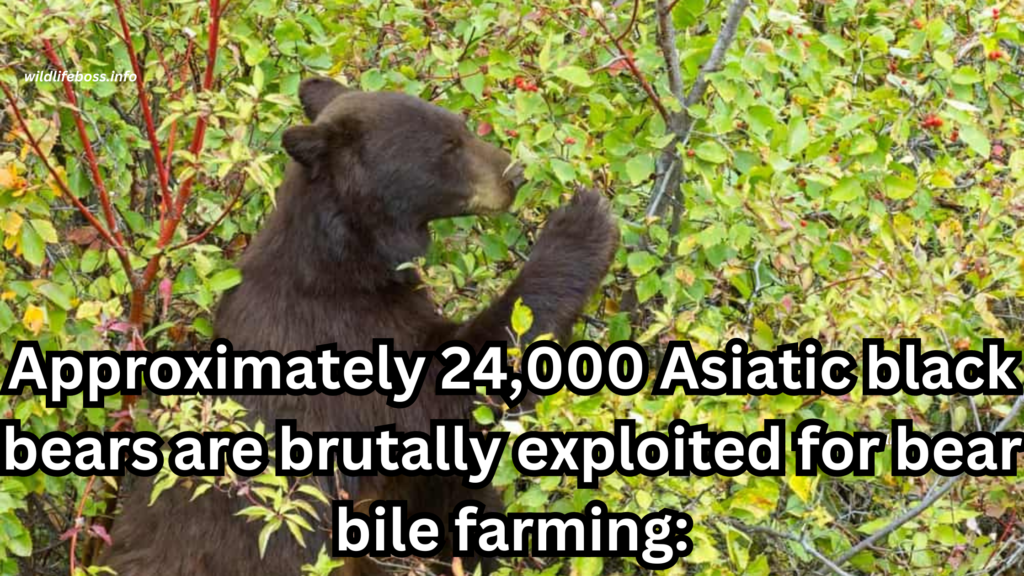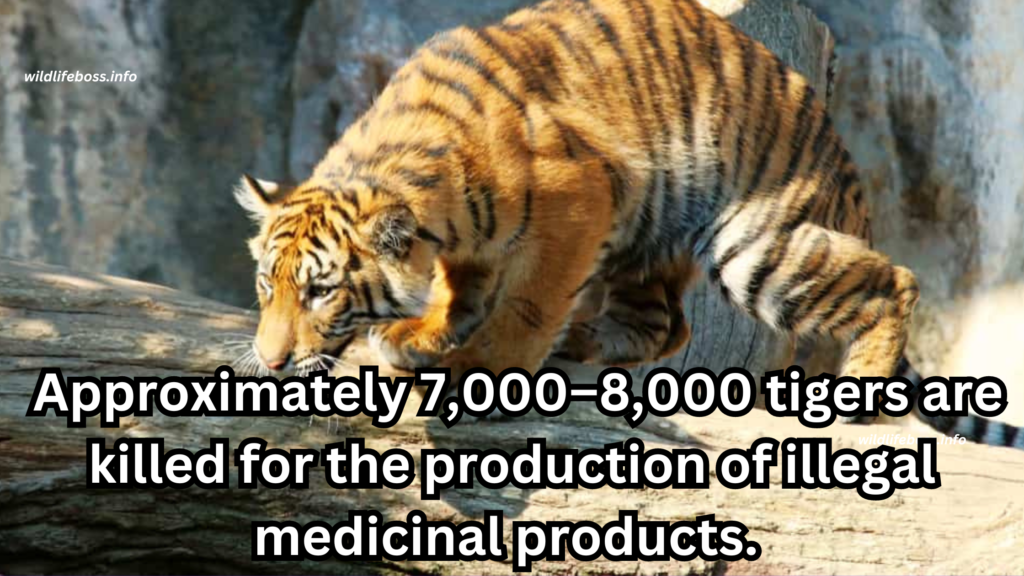The frequency of animal abuse is higher than most people think.
Millions of animals suffer cruelty every year in the United States alone, from neglect, cruel experimentation, and mistreatment of wildlife to domestic violence against companion animals.
These startling statistics on animal abuse will help you understand how dire the situation is and the need for everyone to work toward ending inhumane behaviors.
Animal Abuse Key Facts:
- Chickens are the most abused animals in the planet. Raised for meat and eggs, over 55 billion chickens face regular suffering every year.
- Every year, around 110 million animals are slaughtered in American laboratories.
- An estimated 10 million companion animals are abused each year in the United States alone.
- In the United States, 1.8% of adults reported having experienced animal abuse, or around two out of every 100.
- About 13% of deliberate animal cruelty instances involve interpersonal violence.
- When a pet owner checks into a domestic violence shelter, almost 71% of them say their batterer has mistreated family pets.
- The trafficking and selling of wildlife puts around nine thousand species at risk of going extinct.
39 Animal Abuse Statistics & Facts:
1. In American laboratories, almost 110 million animals are killed annually.

Animal cruelty allowed by the government is the leading cause of death for a variety of domestic animals worldwide. Over 110 million animals are murdered annually for scientific purposes in the United States alone, according to PETA’s data on animal abuse.
But the United States is not the only nation that permits animal experimentation.
In 2021, 3.06 million lab animal procedures were performed in the UK. In 2019, more than a million species were maintained in captivity or utilized for study in American laboratories, with the exclusion of rats, mice, birds, reptiles, and amphibians. In 2020, 5.07 million animals were used in studies in Canada.
2. Nearly 6.3 million companion animals arrive into US shelters annually.
Many animal organizations use the poignant phrase “Pet for life” to raise awareness to animal abandonment. According to ASPCA data on animal abuse, over 6.3 million pets enter American shelters annually, suggesting that a large number of individuals still need to be made aware of this fact.
Even while that figure is enormous, the Society acknowledges that it has decreased from 2011, when data indicated that 7.2 million companion animals were abandoned annually.
Given that there are 3.2 million cats among these animals, it appears that cats are abandoned more often than dogs. The largest decrease since 2011 has been in dogs, down from 3.9 to 3.1 million.
3. Every year, some 920,000 animals from shelters are put to death in the United States.
The ASPCA examined data on animal abandonment as well as the startlingly high number of animals that are put to death in shelters annually.
It seems that about 920,000 never make it out. This is due to the fact that only 4.1 million animals in shelters get adopted annually.
Once more, the figures don’t seem good for cats. About 530,000 cats and 390,000 dogs are among the total number of animals that are put down to die every year. The majority of animals adopted from shelters are dogs, which is not surprising.
4. 88% of families whose children have been physically abused report having experienced pet abuse.
Twenty men and women are abused in the United States every minute, according to statistics from the Humane Society. According to a poll, 71% of victims of domestic violence said their abuser also attacked their pets.
Furthermore, a different poll found that households that are being investigated for possible child abuse also frequently abuse their pets.
Pet cruelty seems to have happened in 88% of these households.
5. Every year, up to 250,000 animals become victims of hoarding.
Animal abuse arises from well-intentioned animals, particularly when pet ownership turns into hoarding.
When a person owns so many pets that they are unable to provide them all the care they need, this is known as animal hoarding. Consider insane cat ladies and those who are compelled to take in and care for any abandoned animals they come across.
The issue is that these creatures rarely get the care they require and live in hazardous and unhygienic environments. Up to 250,000 animals are thought to become victims of hoarding in the United States each year.
6. Of animal control incidents involving minors, 47% involved the kid as the animal abuser.
An estimated 70% of American families are home to an animal friend, according to a study on pet cruelty and the welfare of children and animals.
Homes with children seven years of age or older are more likely to have pets, but not all youngsters are good to their four-legged friends.
It was found that allegations about children being the offenders, whether from friends, relatives, or neighbors, accounted for around 47% of animal control cases involving children.
7. Children are more likely to mistreat dogs than cats or wild animals.

Researchers looked at the kinds of animals that kids might mistreat in the same study on the welfare of kids and animals.
Research indicate that 23% of abuse cases involved cats, while 62% involved dogs. 15% of all incidents involved the maltreatment of wild animals, more frequently in conjunction with peers or adults.
The majority of homes with an animal friend have dogs, which is most likely the cause of those statistics. Actually, only 45.3 million of the 90.5 million households with pets have cats, while 69 million have dogs.
8. Domestic violence events result in the abuse or death of around a million animals.
Although incidents of animal abuse and neglect can occur in any home, they are more common in those where there has been domestic violence documented.
The Humane Society of the United States reports that, in the United States alone, domestic violence results in the mistreatment or death of up to a million animals annually.
Furthermore, data on animal companion abuse indicate that perpetrators harm domestic animals as a means of controlling their spouse and kids.
9. Every year, more than 25,000 greyhounds are produced for racing, and the majority of them suffer abuse.

Even though greyhound racing is only permitted in Alabama, Arkansas, Iowa, Texas, and West Virginia, the betting business nonetheless receives hundreds of millions of dollars from it annually. However, mistreatment of thousands of animals occurs behind the scenes in sports.
In the United States alone, fans breed approximately 25,000 greyhounds annually to keep the racetrack stocked with adequate racers. At least 5,000 former racers pass away every year, and over 15,000 sustain injuries while competition or training.
As if these mistreatments weren’t enough, dogs are also given drugs or anabolic steroids in advance of competitions to enable them to compete even while they are wounded. Illegal fighting is another type of sports animal abuse, in addition to racing.
10. Approximately 2.6 million dogs in the US are produced by commercial breeders or puppy mills.

Aside from greyhounds, dog breeding is a wealthy industry for immoral individuals. Federal estimates place the number of puppy mills in the United States at around 10,000, with over 2.6 million puppies produced there each year.
Issues related to abuse in puppy mills range from aggression towards people to sick or abandoned puppies.
Generally speaking, females are housed in excessively small cages with inadequate medical attention, leading to appalling conditions. In addition, a lot of these dogs are put down by breeders.
In January 2023, for instance, USDA penalized an Iowa breeder over $12,000 for euthanizing undesired dogs given unlawful injections.
11. Because of wildlife trade, about 9,000 land-based species are in danger of going extinct.
Animal abuse does not just affect companion animals and domestic animals. Scientists claim that one of the most prevalent forms of mistreatment of wild animals is wildlife trade, which threatens the extinction of over 9,000 species.
Numerous animals are the targets of poaching, trafficking, and trading for a wide range of reasons. Some animals—like rhinos and elephants—are slaughtered for their flesh or skins, while others—like those caught alive and sold as pets—are disfigured for their horns or tusks.
These actions also target non-mammalian species. For instance, poaching for the pet trade has driven 66 species of parrots all but extinct.
12. The majority of the lives of circus animals are spent in chains or cages.

Animal-using circuses are accountable for several types of animal abuse in addition to their involvement in the hunting and trading of wildlife.
The animals employed for entertainment spend over 96% of their lives in chains or cages, where they eat, sleep, and urinate in the same area, according to statistics on animal mistreatment in circuses.
Since there is no climate control in animal cages or box cars, the animals inside suffer from intense summer and winter temperatures.
Every significant animal-using circus has received citations for failing to provide the basic level of care, according to the United States Animal Welfare.
13. A total of 22,218 great apes were taken out of the wild via the illegal trade in Asian circus acts.
In Asia, new circus programs featuring giant apes have emerged recently, going beyond typical circus presentations. Circuses are resorting to animal trafficking in order to advance their shows and win more audiences.
Statistics from the United Nations Environment Program show that between 2005 and 2011, 22,218 great apes were taken out of the wild for this specific reason. Of the total, orangutans made up 56% and chimpanzees around 64%.
Along the supply chain, many of these baby apes have perished and many more have been traumatized by their abduction. As they get older, the majority of great apes become uncontrollable, so many are “retired” to small cages or killed to make room for newcomers.
14. Approximately 75% of zoos provide activities for animal-visitor interaction while ignoring animal welfare
Animal abuse statistics show that 75% of zoos and aquariums that are members of the World Association of Zoos and Aquariums allow animal-visitor interactions while ignoring animal welfare, despite the fact that it is commonly recognized that animals suffer in zoos.
The majority of these encounters included the usage of large cats in gladiator arenas, dolphins as surfboards, chimpanzees riding scooters while dressed in diapers, and elephants playing hoops.
Even while these actions are entertaining to see, they use the same brutal training methods as are employed in circuses.
15. At tourist attractions, about 3,000 dolphins are held in appalling conditions in captivity.

When aquariums and other entertainment venues include in the cost of admission for their dolphin shows, one dolphin may bring in anywhere from $400,000 to $2 million a year for these establishments. The fact that the majority carry more than a dolphin is not shocking.
Indeed, data on the mistreatment of marine animals indicate that around 3,000 dolphins are kept in amusement parks worldwide. These marine animals are kept in inhumane captivity, including cramped, tiny aquariums.
In addition, they receive no genuine mental stimulation and are trained to go without food.
Sea also: 17 Types Of Amazing Animals Like Dolphins(With Photos)
16. In just one day in 2021, around 1,400 dolphins were slain in the Faroe Islands.
As groups dedicated to ending animal abuse attempt to outlaw the hunting of dolphins and whales, the Faroe Islands make headlines year after year.
Uncertainty surrounds the potential prohibition on this custom, whereas in 2021 over 1,400 dolphins were slain in a single day.
If data on sustainable whaling are to be believed, the Faroese government estimates that, in addition to dolphins, the Islands kill around 600 pilot whales annually.
17. Every year, the fishing industry kills around a trillion creatures globally.
Animal abuse is not limited to barbaric customs; the fishing business is also to blame. Actually, aquafarms either on land or in the water provide the majority of the fish that is consumed today.
These fish live in cramped tanks or densely populated areas, where they may endure up to two years of agony in waters that are rich in nitrates and ammonia. Many of them have parasite infections that cause them to lose their organs or gills due to overpopulation and unhygienic circumstances.
Marine life animal abuse statistics, on the other hand, show that commercial fishing claims the lives of around a trillion marine species annually.
Since fish are exempt from humane slaughter laws, the majority of them are murdered in horrifying methods, such as suffocating to death in the case of smaller fish or even clubbing to death in the case of swordfish and tuna.
18. Shock often kills fish that are captured and then put back into the water.
Fishing aficionados view the popular pastime of catch-and-release as “humane.” However, data on animal abuse show that nothing is compassionate.
According to experts, the great majority of fish that are captured, released, and die soon after from extreme psychological trauma. Fish that survive longer also experience discomfort from injuries sustained by fishing gear.
While PETA argues that it is hard to estimate the number of fish killed for this pastime, the number is probably in the thousands.
19. Every year, around 100 million animals are murdered for their fur:
Although fur coats have kept people warm for ages, the brutality of the fur trade is still mostly unjustified today. Data on animal mistreatment compiled by PETA indicates that over 100 million animals are slaughtered annually for their fur.
Fur farm animals are kept in tiny cages for the entirety of their lives, where they are malnourished and subjected to animal abuse. They are then killed by hanging, beating, bleeding, or even skinning alive.
Given that dogs and cats make up the majority of the skinned animals in China, the majority of the actual fur that is imported into the United States is purposefully mislabeled there.
20. Approximately 24,000 Asiatic black bears are brutally exploited for bear bile farming:

The extinction of the fragile Asiatic black bear species is a real possibility. A major hazard to this species is habitat loss combined with bear bile farming.
Approximately 24,000 of these animals are kept in tiny cages and exploited for bile farming, according to statistics from the World Animal Protection. The term “bile farming” describes the extremely painful process of extracting bile from living bears.
During the bile collecting process, these animals must experience everyday torment, but the misery doesn’t stop there.
To put it mildly, living conditions on these farms are perilous. Numerous animals have a range of health issues, including parasites and diseases.
Their body fluids are sold on the market for traditional Chinese medicine, and they seldom ever receive veterinary treatment.
21. Approximately 7,000–8,000 tigers are killed for the production of illegal medicinal products.

Not just black bears endure suffering because of conventional treatment.
The University of Copenhagen has data on animal cruelty that show that every year, between 7,000 and 8,000 tigers are murdered to make traditional remedies that are prohibited, after being bred in basements.
The startling fact is that there are nearly twice as many tigers kept in these farms as there are tigers remaining in the wild.
The process of dissolving tiger bones in a high-pressure cooker for two to three days yields tiger bone glue, which retails for around $6,818 per pound ($15,000 per kilogram). It follows that it is understandable why these illicit farms continue to operate.
22. Every year, almost 19,000 cats suffer animal abuse in American laboratories.
Millions of animals are used and killed in American research and educational facilities every year. Based on statistics related to animal cruelty from PETA, almost 19,000 of those are cats.
A lot of these cats were strays from a broken shelter system, leaving them destitute. They wind up in unpleasant and intrusive experiments at universities or research facilities, or in brutal classroom dissections at educational institutions.
They either pass away during the trials or die soon after.
23. Every year, 97% of the animals in industrial farms are killed or tortured.
While many individuals love steak, relatively few consider the statistics behind animal suffering. Many people may be unaware that 97% of the animals kept in industrial farms are slaughtered or subjected to abuse every year.
For example, sows raised in pig farms are kept in kennels that are just big enough for them to lie down and stand when they are always pregnant. The animals in their cages are unable to move or walk.
Additionally, cows are housed in cramped barns and quarters. Before being killed, beef cattle are sold at auction, driven in noisy trucks, and branded with hot irons.
Animal Neglect vs. Intentional Cruelty
The Animal Welfare Institute distinguishes between two forms of abuse: deliberate brutality and neglect.
Violent behaviors like hitting or murdering animals, sexually abusing them, or engaging in animal fights are examples of intentional cruelty. Inadequate care or substandard living circumstances are considered a passive type of animal abuse, sometimes referred to as neglect.
Most of these abuse types happen on their own. In contrast, 20% of instances involving intentional cruelty involved the commission of another act, such as violent crimes against persons or domestic violence.
In just 3% of incidents of neglect were crimes against people and animals committed simultaneously.
Nonetheless, the most frequent forms of animal abuse reported in the United States are neglect and abandonment.
What Can You Do Against Animal Abuse?

While you can’t stop animal cruelty on your own, you may contribute to its prevention by doing the following:
- Take care of your pets. Adopting an animal requires you to provide for all of its requirements, including proper nutrition, housing, mental stimulation, and medical attention.
- Please be mindful of the animals in your immediate neighborhood as well as any other locations you visit. Avoid following fads that may result in animal abuse, such as taking selfies with wildlife. Avert circus acts and zoos if at all feasible.
- Provide a positive example for your kids and instill in them a respect for animals.
- Report cruelty and neglect of animals right away. Help those who are too busy to take care of their animal partner; do not purposely ignore them.
- Provide a temporary home for an abandoned pet or, if that is not feasible, shelter an animal in need. Foster homes can aid the recuperation of abused or neglected pets, so improving their chances of being adopted.


Pingback: What Are Ducks Feet Called? Amazing Facts And Function - Wildlifeboss.info